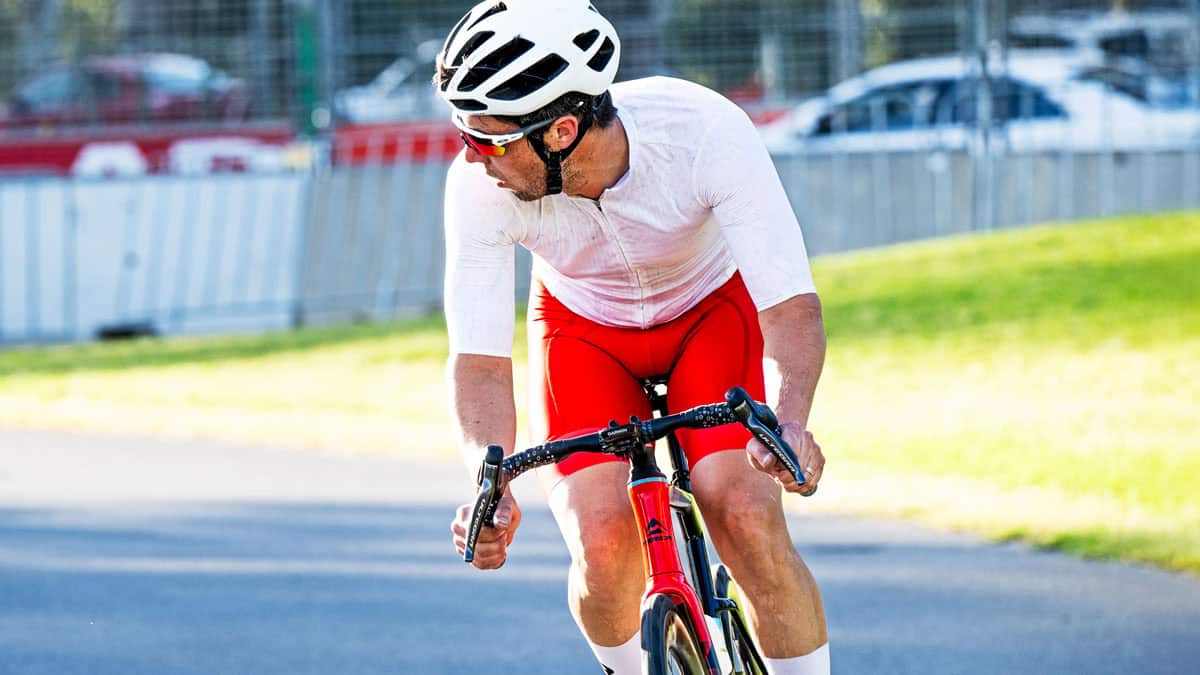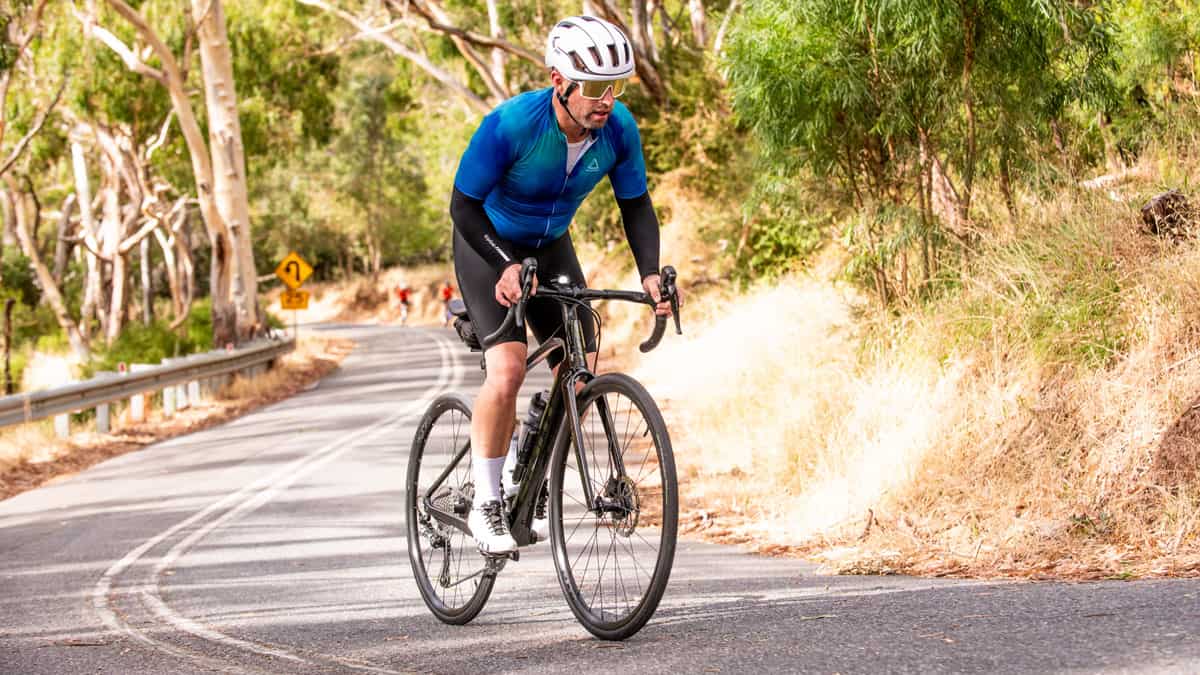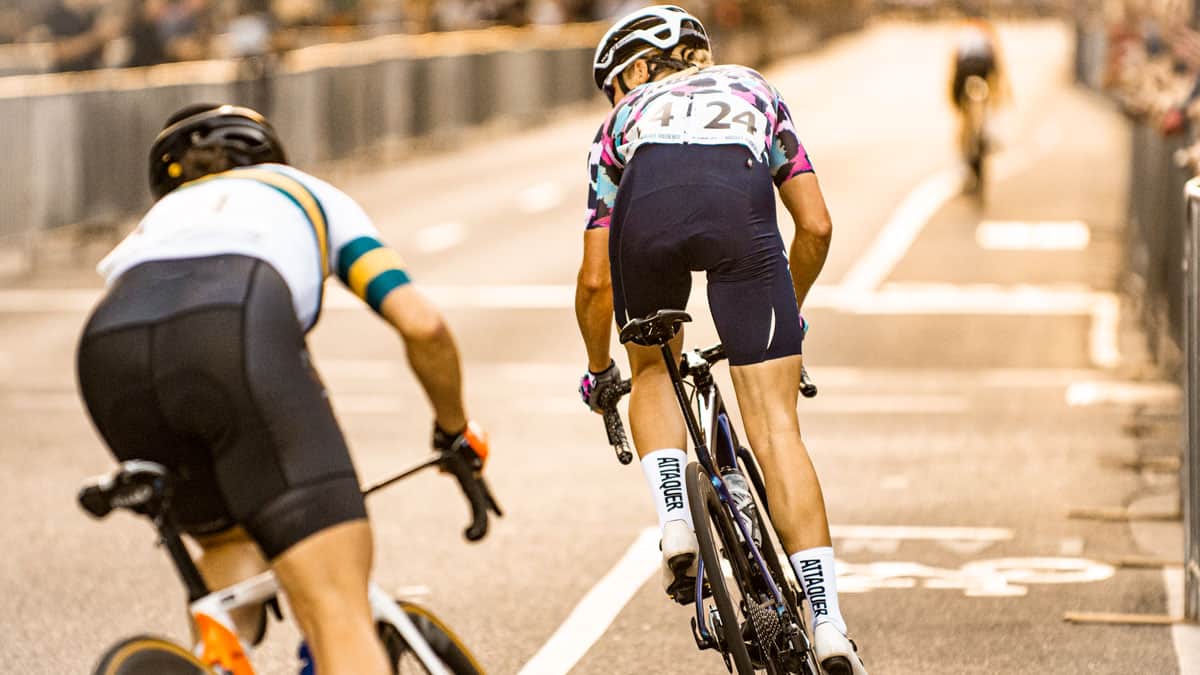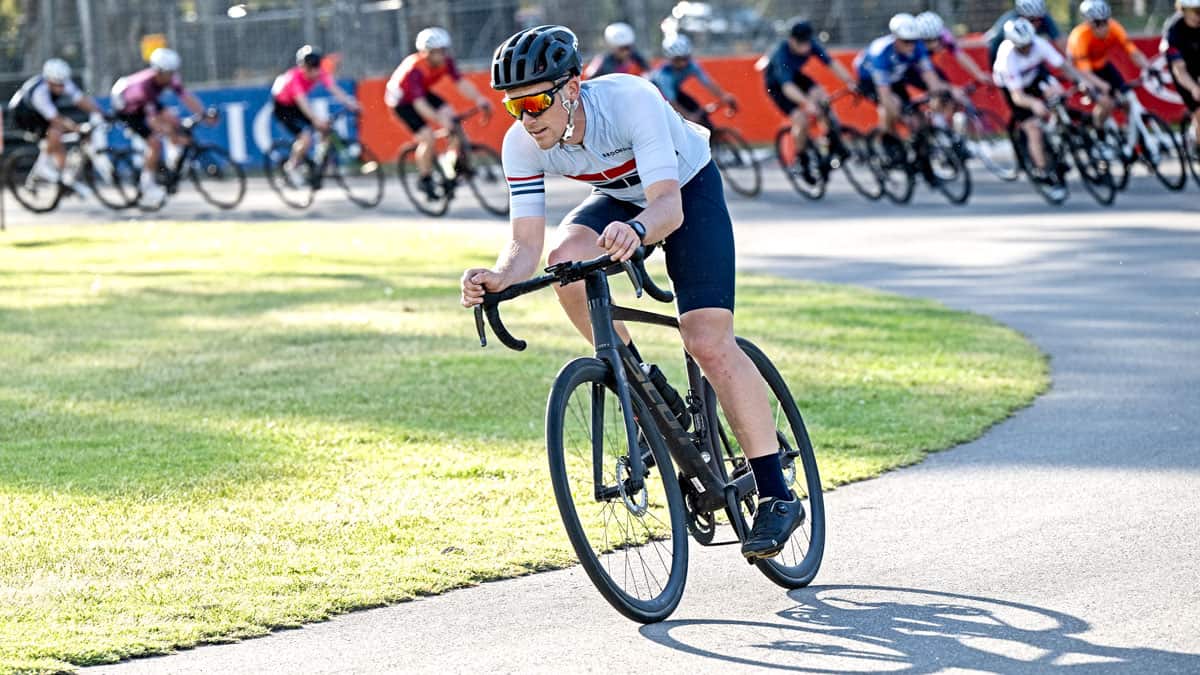In this video Matt Brindle our functional strength coach discusses why stability is critical to developing power on the bike and some exercises to avoid. This is the third part of several videos on the subject.
Video Transcript:
David Heatley:
One of the things that’s really important to me is stability. It really comes from a statement that you made to me a few years ago. You can only develop as much strength as you can stabilise.
Matt Brindle:
That’s right. Certain complexes throughout the body are designed to be more stable than others. Others are designed to be fuller motion. Again, it would depend from activity to activity sometimes. Now, with cycling, generally you want a stable pelvis so that you can get great force transmission through the hips, through the knees, through the ankles, into the pedals.
David Heatley:
If you look at great cyclists that just ride really well, they’re just really quite stable in the hips, time trialling, riding on the bike, hill-climbing. It’s like they’re locked in there, and everything’s driving from the hips. That’s what I like to replicate and what I like to teach to the cyclists that are doing my indoor training sessions or out on the road. It’s all about making sure that you’ve got a good core to be able to develop good driving force through the legs.
Matt Brindle:
That’s right, but when we talk stability, we’re still talking an ability to have motion, but the right amount of motion at the right time. It will be subtle motion. I spoke to you about this a little earliersubtle motion is sometimes even more important than the bigger motions of the lower extremities for cycling. Even though you’ll see there’s not a lot of movement in the pelvis for the top cyclists, they look very steady. Subtle motion can just be one or two degrees.
David Heatley:
Yes. They’re still moving on a bike. There’s a little bit of rolling in the shoulders and those sort of things. There’s still movement, but they’re not like rock
Matt Brindle:
They’re not rock solid.
David Heatley:
But it is very stable.
Matt Brindle:
Yes. The stability still I suppose there’s a difference in understanding the stability. Some people believe that stability is static, and then there’s stability which is dynamic, which is what we apply. We apply dynamic stability, just the right amount of motion that will transfer the forces and the stresses from one complex to another. Without them occurring, then you end up with compensations from immobility, from those hips not moving at all, and so something has to compensate, force it to be able to transmit through the system. Those joints which have to compensate aren’t really the ones that are designed to do it.
David Heatley:
Okay.
Matt Brindle:
Okay, so then they start to end up with wear, tear, strain, injuries, inflammation, all that sort of stuff, and generally a loss in force on the bike.
David Heatley:
Yes, right. Let’s go to a classic exercise, a leg press, my pet hate. Here’s an exercise where you’re locked into the leg press and your legs are just pummelling away at the weight. Great for developing strength, but obviously tell us about the translation back into the dynamic movements involved in cycling. What’s some of the issues with the leg press?
Matt Brindle:
Some of the issues? The main one is it’s totally fixed. When I say fixed, the plane of motion that that plate will move in is what we call sagittal, which is forward and back or up and down.
David Heatley:
When you’re on a bike, obviously when you’re driving, there’s a little bit of rotation in your hips as you’re driving into the bike. Because you’re locked into the machine, you’re not getting that.
Matt Brindle:
You’re not getting any rotation. The leg press, generally, you can do it single leg, you can do it bilaterally, which is two legsmost people will do it bilaterally.
David Heatley:
Two legs.
Matt Brindle:
Two legs, that’s right. Again, the carry-over. There’s none of that rotation. There’s no integration through those hips into the core and the shoulders, which also transmit force and power and whatever into the handlebars.
David Heatley:
So you’re developing strength in your legs, but there’s no developing strength to stabilise that power in your hips or in the back, or all the way through that chain, holding onto the handlebars. Of course, when you get out of the seat, everything changes, doesn’t it?
Matt Brindle:
Definitely.
David Heatley:
Because you’re not actually on the seat any more. When you get out of the seat, suddenly your hips are floating in free space, and the leg press doesn’t really
Matt Brindle:
Doesn’t help with that at all.
David Heatley:
The other thing about the leg press is that you’re actually sitting back on it.
Matt Brindle:
Yes, so you’re what we call supine as opposed to prone. Positions, forces, are all different through the hips. I mean, yes, leg press does build strength and Hypertrophy.
David Heatley:
Yes, sure. I’m not saying that it doesn’t, right?
Matt Brindle:
In terms of having the ability to transmit forces and stresses through the whole system, it cuts out.
David Heatley:
It cuts out, because you’re basically locked into that machine.
Matt Brindle:
That’s right, yes.
David Heatley:
Of course, the other thing You talked about pushing against that machine and that saginal plane. Is it sagittal or ?
Matt Brindle:
Sagittal.
David Heatley:
Sagittal plane. When you get off the seat on a bike, your hips are floating in free space, and there’s movement in the bike’s movement. When you go to sprint, there’s a lot of movement happening. If you look at sprinters like I like to go back to Robbie McEwen, and you see him sprinting, if you see video footage, he’s driving away at the bike and his hips are quite stable. They’re stable, but they’re obviously still moving, but his bike’s just going backwards and forwards. There’s obviously some movement that’s happening there. The other thing about driving into the legs is there’s forces being applied one side at a time rather than both sides at the same time. You alluded to that, didn’t you?
Matt Brindle:
Yes. It is with the legs, even though there’s force going through one side with the legs, it will generally transmit to the opposite side through the shoulders and the body will work that rotational pattern to power the bike, and that’s why that bike moves so much, because you’re forcing one side, through the legs, into the opposite shoulder and pulling it back, and creating this great not only what we call transverse, which is rotational, but frontal plane motion of that bike, which is side to side, that enables so much power to go into the pedals.
David Heatley: Yes.
Where to from here
All our training programs include our most complete strength training program that’s specifically designed for endurance cyclists. When you sign up for one of our coaching packages you get access to it as part of your training or you can buy it separately by clicking here.
Check out this article on functional strength training vs traditional muscle isolation exercises
Other articles of interest:
Why Do Cyclists Really Shave Their Legs?
Cycling Heart Rate Zones Explained – How To Use Heart Rate Monitor And Zones To Improve Your Cycling
How To Work Out Your Cycling Heart Rate Zones
Introduction To Cycling Power Zones
[VIDEO] – Why it’s important to ride your bike through winter
How to Get Fit During the Winter Months – The Most Effective Winter Cycle Training
How To Get Back On Track With Your Winter Training – Winter Cycle Training Tips





Leave A Comment